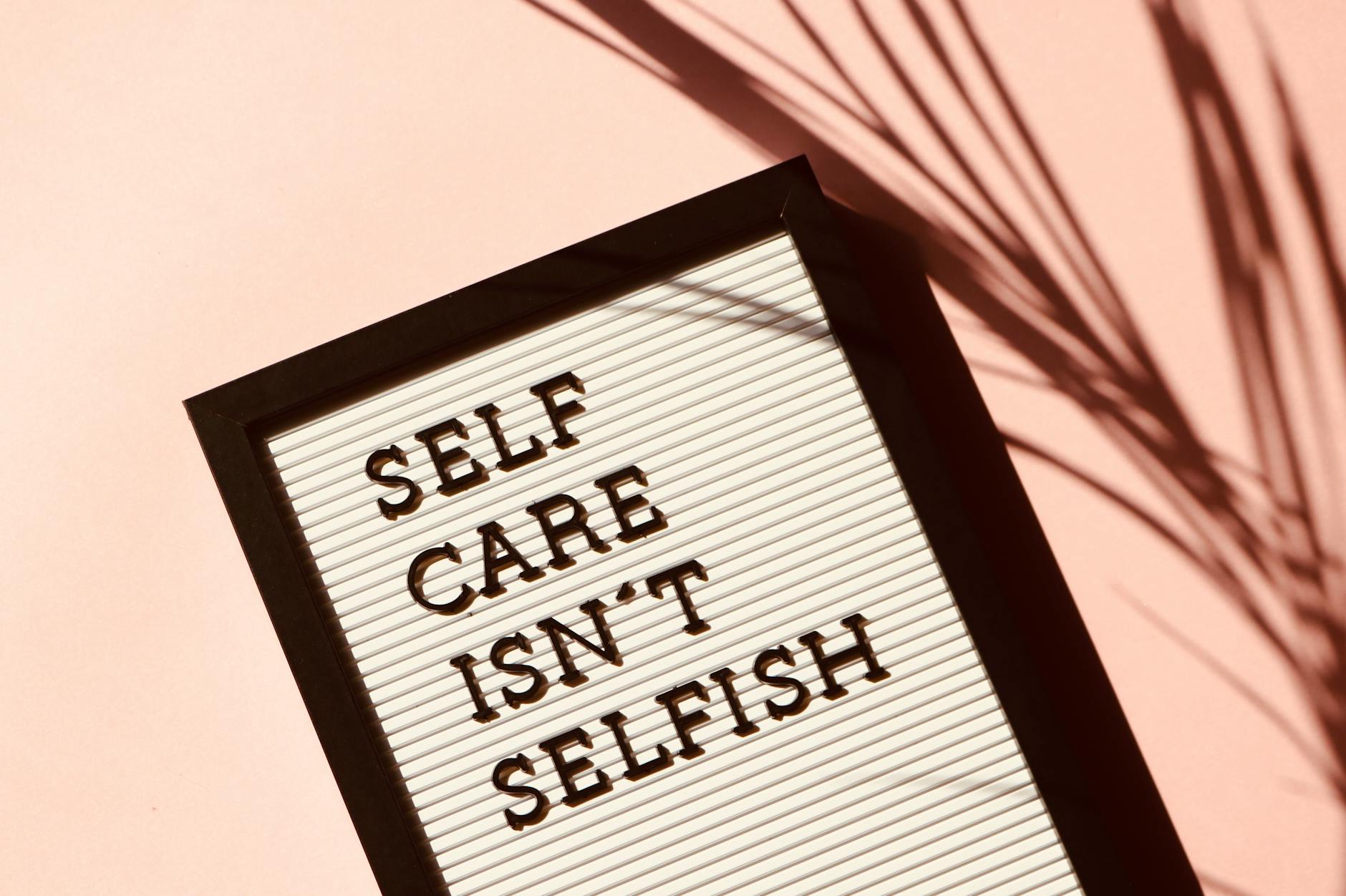10 Ways To Good Health & Wellness
10 Ways To Good Health & Wellness

In a world where burnout and chronic health issues are becoming increasingly common, achieving optimal health and wellness seems like an elusive goal. We're constantly bombarded with conflicting health advice, miracle solutions, and quick fixes that leave us feeling overwhelmed and confused. 🤔
The truth is, true wellness isn't about following the latest health fad or making drastic lifestyle changes overnight. It's about embracing a holistic approach that nurtures both body and mind. By making small, sustainable changes across different aspects of your life - from what you eat to how you manage stress - you can create a foundation for lasting health and vitality. ✨
Let's explore 10 proven strategies that work together to enhance your overall well-being, starting with the basics of nutrition and exercise, and moving through to the often-overlooked aspects of environmental wellness and personal growth. These practical approaches will help you build a healthier, more balanced life without feeling overwhelmed.

Balanced Nutrition Habits
Master Portion Control
Understanding proper portion sizes is crucial for maintaining a healthy diet. Use these simple comparisons to measure portions without a scale:
-
Protein (meat/fish): Palm of your hand
-
Carbohydrates: Cupped hand
-
Vegetables: Two fists
-
Healthy fats: Thumb size
Choose Whole Foods Over Processed
The key difference between whole and processed foods lies in their nutritional value:
| Food Type | Benefits | Examples |
|---|---|---|
| Whole Foods | High nutrients, fiber, no additives | Fresh fruits, vegetables, whole grains |
| Processed Foods | Lower nutrients, added sugars, sodium | Packaged snacks, sugary cereals |
Stay Hydrated Daily
Create a consistent hydration schedule by:
-
Drinking 8-10 glasses of water daily
-
Setting reminders on your phone
-
Keeping a reusable water bottle nearby
-
Consuming water-rich foods
Plan Weekly Meal Prep
Effective meal planning ensures balanced nutrition throughout the week:
-
Choose one day for grocery shopping
-
Prep ingredients in bulk
-
Store meals in portion-sized containers
-
Keep healthy snacks readily available
Now that you've learned about proper nutrition habits, let's explore how regular exercise complements these dietary choices for optimal health.

Regular Exercise Routine
Combine Cardio and Strength Training
A well-rounded exercise routine integrates both cardiovascular and strength training activities. Here's an optimal weekly workout structure:
| Training Type | Frequency | Duration | Benefits |
|---|---|---|---|
| Cardio | 3-4 times/week | 30-45 mins | Heart health, stamina |
| Strength | 2-3 times/week | 45-60 mins | Muscle tone, metabolism |
Find Enjoyable Physical Activities
The key to maintaining a consistent exercise routine lies in choosing activities you genuinely enjoy:
-
Group fitness classes (dance, cycling, yoga)
-
Team sports (basketball, volleyball, soccer)
-
Outdoor activities (hiking, swimming, tennis)
-
Home workouts (bodyweight exercises, online classes)
Set Achievable Fitness Goals
Create SMART fitness goals to track your progress:
-
Specific: Target exact improvements (e.g., run 5k)
-
Measurable: Track progress numerically
-
Achievable: Set realistic expectations
-
Relevant: Align with your overall health goals
-
Time-bound: Set clear deadlines
Starting with just 15 minutes daily and gradually increasing duration helps build sustainable habits. Remember to listen to your body and adjust intensity as needed. Now that you've learned about establishing an exercise routine, let's explore how quality sleep patterns contribute to your overall health and fitness goals.

Quality Sleep Patterns
Establish Consistent Sleep Schedule
Creating a regular sleep routine trains your body's internal clock. Aim to:
-
Go to bed and wake up at the same time daily
-
Maintain schedule even on weekends
-
Allow 7-9 hours of sleep nightly
Create Optimal Bedroom Environment
| Element | Ideal Condition |
|---|---|
| Temperature | 65-68°F (18-20°C) |
| Lighting | Complete darkness |
| Noise Level | Minimal to none |
| Bedding | Clean, comfortable |
Limit Screen Time Before Bed
Screen exposure affects sleep quality through:
-
Blue light disruption of melatonin production
-
Mental stimulation from content
-
Increased alertness
Implement a "digital sunset" 1-2 hours before bedtime:
-
Turn off notifications
-
Use night mode settings
-
Keep devices outside bedroom
Practice Relaxation Techniques
Incorporate these pre-sleep rituals:
-
Deep breathing exercises
-
Progressive muscle relaxation
-
Gentle stretching
-
Meditation or mindfulness
-
Reading a physical book
With proper sleep habits in place, managing daily stress becomes more achievable, which we'll explore in our next section.

Stress Management
Practice Daily Meditation
Meditation serves as a powerful tool for managing stress levels and promoting mental clarity. Start with just 5-10 minutes each day, gradually increasing the duration as you become more comfortable. Here are effective meditation techniques:
-
Mindfulness meditation
-
Guided visualization
-
Body scan meditation
-
Loving-kindness meditation
Try Deep Breathing Exercises
Deep breathing exercises can instantly calm your nervous system and reduce stress hormones. Incorporate these proven breathing techniques into your daily routine:
| Technique | Method | Benefits |
|---|---|---|
| 4-7-8 Breathing | Inhale (4s), Hold (7s), Exhale (8s) | Reduces anxiety |
| Box Breathing | Equal counts of 4 for all phases | Improves focus |
| Diaphragmatic | Deep belly breathing | Lowers blood pressure |
Set Healthy Boundaries
Creating and maintaining healthy boundaries is essential for stress management. Implement these strategies:
-
Learn to say "no" without guilt
-
Establish clear work-life boundaries
-
Set limits on social media usage
-
Communicate your needs clearly
-
Create dedicated personal time
Now that you have these stress management tools at your disposal, let's explore how mental wellness practices can further enhance your overall well-being.

Mental Wellness
Maintain Social Connections
Strong social bonds are fundamental to mental health. Regular interaction with family, friends, and community members provides emotional support and reduces feelings of isolation. Here's how to nurture these connections:
-
Schedule regular video calls with distant family members
-
Join local community groups or clubs
-
Plan weekly coffee dates with friends
-
Participate in team activities or group hobbies
Practice Gratitude
Cultivating gratitude shifts focus from negative thoughts to positive aspects of life. Research shows that grateful people experience:
| Benefits of Gratitude | Impact on Wellness |
|---|---|
| Reduced anxiety | 40% decrease |
| Better sleep quality | 25% improvement |
| Enhanced relationships | 30% stronger bonds |
| Increased happiness | 35% boost |
Seek Professional Support
Mental health professionals provide valuable guidance and support. Don't hesitate to reach out when:
-
Feeling overwhelmed by daily tasks
-
Experiencing persistent mood changes
-
Having difficulty managing stress
-
Struggling with relationships
Engage in Mindful Activities
Mindfulness practices enhance mental clarity and emotional balance through:
-
Daily meditation sessions
-
Mindful walking in nature
-
Conscious breathing exercises
-
Regular journaling practice
With a strong foundation in mental wellness, maintaining work-life balance becomes more manageable. Let's explore how to achieve this equilibrium in your daily routine.

Preventive Healthcare
Schedule Regular Check-ups
-
Annual physical examinations
-
Dental cleanings every 6 months
-
Vision tests every 1-2 years
-
Age-appropriate cancer screenings
-
Blood work and basic health panels
Regular medical check-ups serve as your first line of defense against potential health issues. Early detection of problems can lead to more effective treatments and better outcomes.
Stay Current with Vaccinations
-
Seasonal flu shots
-
Tetanus boosters every 10 years
-
Travel-specific immunizations
-
Age-appropriate vaccines
| Age Group | Essential Vaccines |
|---|---|
| Adults 19-26 | HPV, Tdap, Flu |
| Adults 27-50 | Tdap, Flu, MMR |
| Adults 50+ | Shingles, Pneumonia, Flu |
Monitor Vital Signs
Keeping track of your vital signs helps identify potential health concerns before they become serious problems. Key measurements to monitor include:
-
Blood pressure (ideal range: 120/80)
-
Heart rate (normal range: 60-100 bpm)
-
Body temperature (normal range: 97.8-99°F)
-
Blood oxygen levels (normal range: 95-100%)
Consider maintaining a health journal or using digital health apps to track these measurements over time. Regular monitoring allows you to spot concerning trends and share accurate information with your healthcare provider.
With these preventive measures in place, let's explore how your environment affects your overall wellbeing.

Environmental Wellness
Create a Healthy Home Space
Your home environment significantly impacts your overall health. Organize your living space to promote wellness by:
-
Decluttering regularly to reduce stress and anxiety
-
Maintaining proper ventilation
-
Using air-purifying plants like snake plants or peace lilies
-
Creating designated areas for work, rest, and exercise
-
Implementing adequate natural lighting
Minimize Toxin Exposure
Reduce harmful substances in your daily environment with these proven strategies:
| Area | Action Steps |
|---|---|
| Cleaning | Use natural cleaners |
| Personal Care | Choose organic products |
| Food Storage | Avoid plastic containers |
| Air Quality | Install HEPA filters |
| Water | Use quality filtration |
Spend Time in Nature
Connecting with nature provides numerous health benefits:
-
Reduces cortisol levels and stress
-
Improves vitamin D absorption
-
Enhances mental clarity
-
Boosts immune system function
-
Increases physical activity naturally
Regular exposure to natural environments is essential for maintaining optimal health. Whether it's a morning walk in a nearby park, gardening, or weekend hiking trips, incorporating nature into your routine strengthens your environmental wellness. Studies show that just 20 minutes of nature exposure daily can significantly improve well-being.
With your environment optimized for wellness, let's explore how to maintain a healthy work-life balance in today's fast-paced world.

Work-Life Balance
Set Clear Working Hours
Establishing firm boundaries between work and personal time is crucial for maintaining optimal health. Create a structured daily schedule that clearly defines your working hours and stick to it consistently. This practice helps train both your mind and colleagues to respect your time boundaries.
Make Time for Hobbies
Engaging in activities outside of work isn't just enjoyable—it's essential for your overall wellbeing. Here's why hobbies are vital:
-
Reduce stress levels
-
Boost creativity
-
Provide social opportunities
-
Improve mental health
-
Enhance work productivity
Practice Digital Detox
Modern life demands constant connectivity, but regular digital breaks are essential. Consider implementing these effective digital detox strategies:
| Time Period | Digital Detox Activity |
|---|---|
| Daily | No phones during meals |
| Weekly | Screen-free evenings |
| Monthly | One full weekend day offline |
The key to successful work-life balance lies in consistency and commitment. Set up automated email responses during off-hours and designate specific times for checking work communications. Remember to schedule regular breaks throughout your workday to prevent burnout and maintain productivity.
Now that you've learned how to maintain healthy work-life boundaries, let's explore how nurturing healthy relationships can further enhance your overall wellbeing.

Healthy Relationships
Nurture Supportive Connections
Building and maintaining strong relationships requires consistent effort and dedication. Focus on developing connections with people who:
-
Share your values and aspirations
-
Offer emotional support during challenges
-
Celebrate your successes genuinely
-
Provide honest feedback when needed
Communicate Effectively
Clear communication forms the foundation of healthy relationships. Key aspects include:
-
Active listening without interruption
-
Express thoughts and feelings clearly
-
Use "I" statements to avoid blame
-
Practice non-verbal communication awareness
Set Clear Boundaries
Establishing healthy boundaries protects both parties in any relationship. Consider these essential aspects:
| Boundary Type | Purpose | Example |
|---|---|---|
| Emotional | Protect mental well-being | Limiting exposure to negative attitudes |
| Physical | Maintain personal space | Respecting privacy needs |
| Time | Balance commitments | Setting specific visiting hours |
| Digital | Manage online presence | Agreeing on social media boundaries |
Practice Empathy
Developing empathy strengthens relationships by:
-
Understanding others' perspectives
-
Validating feelings without judgment
-
Showing compassion during difficult times
-
Recognizing and respecting differences
Building healthy relationships directly impacts our mental wellness, which we'll explore in more detail next.

Personal Growth
Set Wellness Goals
Creating SMART wellness goals is essential for personal development. Your goals should be:
-
Specific - Define exact outcomes
-
Measurable - Track progress numerically
-
Achievable - Realistic within your capabilities
-
Relevant - Aligned with your health journey
-
Time-bound - Set clear deadlines
Track Progress
Implementing effective tracking methods ensures accountability and motivation:
| Tracking Method | Benefits | Best For |
|---|---|---|
| Digital Apps | Real-time monitoring, automated insights | Tech-savvy individuals |
| Journal | Deep reflection, personal connection | Detail-oriented people |
| Progress Photos | Visual motivation, tangible results | Physical transformations |
| Habit Trackers | Consistency building, pattern recognition | Daily habit formation |
Adjust Habits as Needed
Regular evaluation of your wellness journey allows for necessary adjustments:
-
Review progress monthly
-
Identify obstacles and challenges
-
Modify goals based on performance
-
Celebrate small victories
-
Incorporate new healthy habits gradually
Personal growth in wellness requires flexibility and patience. Your journey is unique, and adaptations are natural as you progress. Remember to focus on sustainable changes rather than quick fixes. Small, consistent improvements lead to lasting results.
Now that you understand the importance of personal development in your wellness journey, you can integrate these principles with all previous aspects of health management for a comprehensive approach to well-being.

Taking care of your health and wellness is a lifelong journey that encompasses physical, mental, and emotional well-being. From maintaining balanced nutrition and regular exercise to prioritizing quality sleep and managing stress, each aspect plays a vital role in creating a healthier lifestyle. Building strong relationships, focusing on personal growth, and maintaining work-life balance further contribute to overall wellness.
Remember that small, consistent changes can lead to significant improvements in your health and quality of life. Start by incorporating one or two of these practices into your daily routine and gradually build upon them. Your journey to better health begins with a single step - take that step today and embrace a healthier, more fulfilling life.

Comments
Post a Comment